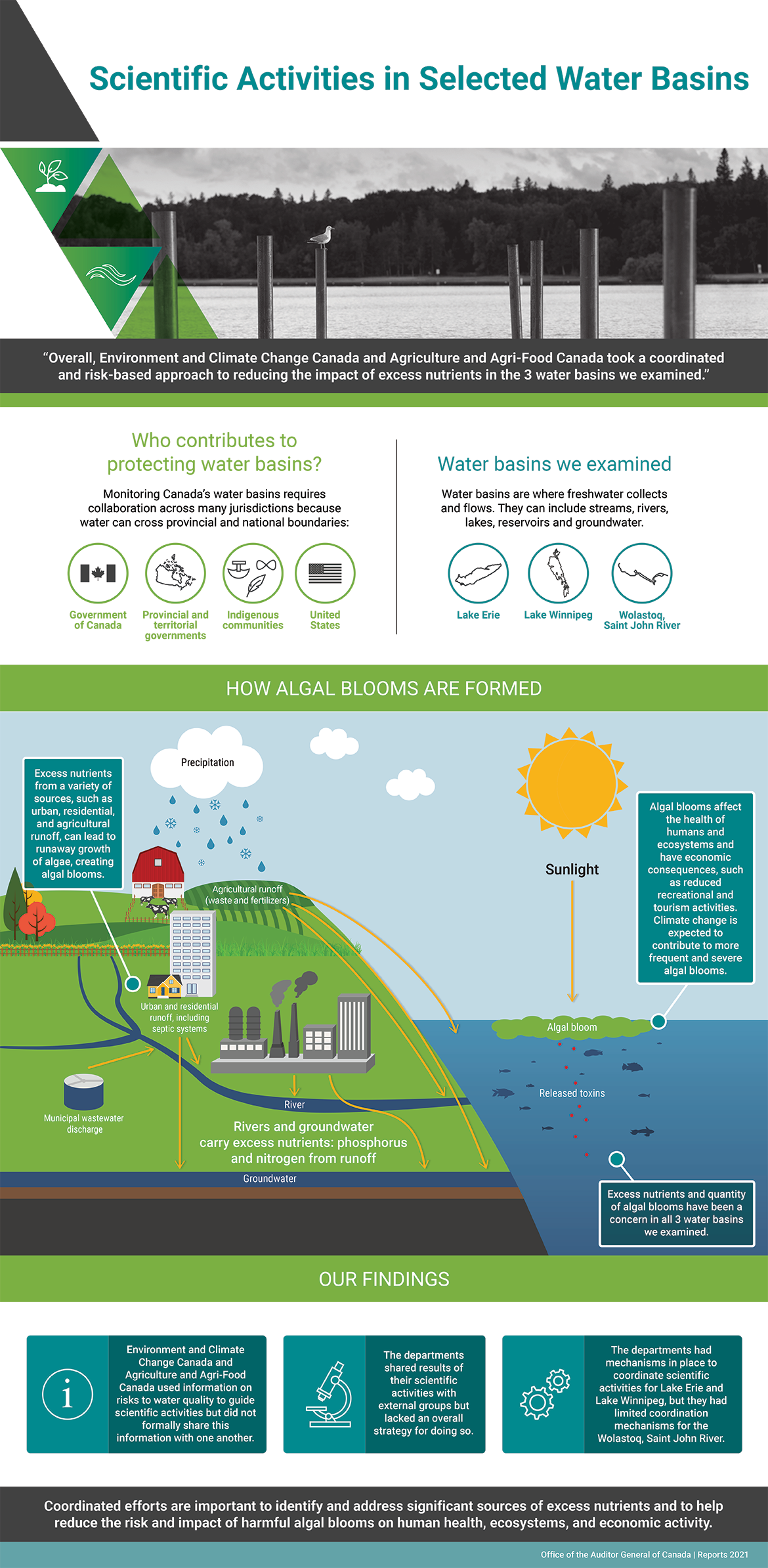Report 3—Scientific Activities in Selected Water Basins—Infographic

Text version
This infographic presents findings from the audit of scientific activities in selected water basins.
Overall message from our 2021 audit
Overall, Environment and Climate Change Canada and Agriculture and Agri-Food Canada took a coordinated and risk-based approach to reduce the impact of excess nutrients in the 3 water basins we examined.
Who contributes to protecting water basins?
Monitoring Canada’s water basins requires collaboration across many jurisdictions because water can cross provincial and national boundaries.
- Government of Canada
- Provincial and territorial governments
- Indigenous communities
- United States
Water basins we examined
Water basins are where freshwater collects and flows. They can include streams, rivers, lakes, reservoirs, and groundwater.
The water basins we examined were Lake Erie, Lake Winnipeg, and the Wolastoq, Saint John River.
How algal blooms are formed
This illustration shows that excess nutrients from a variety of sources, such as urban, residential, and agricultural runoff, can lead to runaway growth of algae, creating algal blooms.
When precipitation falls on agricultural, urban, and residential land, agricultural waste and fertilizers and residential septic systems, among other things, can contaminate the resulting runoff with excess nutrients, such as phosphorus and nitrogen. This runoff then flows into the rivers and groundwater. In addition, industrial releases and municipal wastewater discharge can contaminate rivers and groundwater. The contaminated water from all sources then flows into the water basin, where the combination of the excess nutrients and the sunlight create an algal bloom, which then releases toxins into the water basin.
Algal blooms affect the health of humans and ecosystems and have economic consequences, such as reduced recreational and tourism activities. Climate change is expected to contribute to more frequent and severe algal blooms.
Excess nutrients and quantity of algal blooms have been a concern in all 3 water basins we examined.
Our findings
Environment and Climate Change Canada and Agriculture and Agri-Food Canada used information on risks to water quality to guide scientific activities but did not formally share this information with one another.
The departments shared results of their scientific activities with external groups but lacked an overall strategy for doing so.
The departments had mechanisms in place to coordinate scientific activities for Lake Erie and Lake Winnipeg, but they had limited coordination mechanisms for the Wolastoq, Saint John River.
Moving forward
Coordinated efforts are important to identify and address significant sources of excess nutrients and to help reduce the risk and impact of harmful algal blooms on human health, ecosystems, and economic activity.